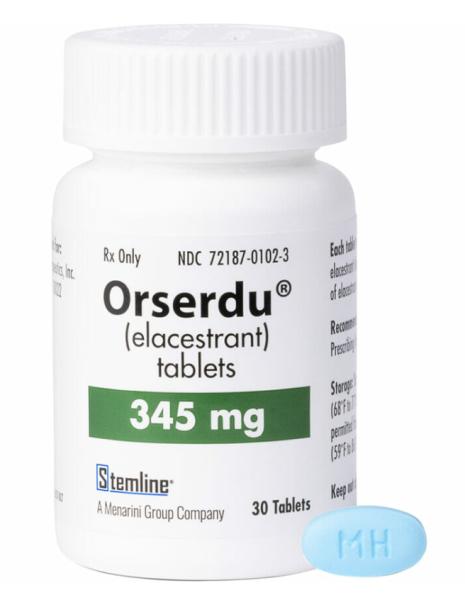Elacestrant Side Effects
Medically reviewed by Drugs.com. Last updated on Aug 14, 2023.
Applies to elacestrant: oral tablet.
Serious side effects of Elacestrant
Along with its needed effects, elacestrant may cause some unwanted effects. Although not all of these side effects may occur, if they do occur they may need medical attention.
Other side effects of Elacestrant
Some side effects of elacestrant may occur that usually do not need medical attention. These side effects may go away during treatment as your body adjusts to the medicine. Also, your health care professional may be able to tell you about ways to prevent or reduce some of these side effects.
Check with your health care professional if any of the following side effects continue or are bothersome or if you have any questions about them:
More common
- Acid or sour stomach
- belching
- constipation
- decreased appetite
- diarrhea
- headache
- heartburn
- hot flush
- indigestion
- muscle or bone pain
- nausea
- stomach discomfort, upset, or pain
- unusual tiredness or weakness
- vomiting
For Healthcare Professionals
Applies to elacestrant: oral tablet.
General
Very common adverse reactions (>10%) included musculoskeletal pain, nausea, increased cholesterol, increased AST, increased triglycerides, fatigue, decreased hemoglobin, vomiting, increased ALT, decreased sodium, increased creatinine, decreased appetite, diarrhea, headache, constipation, abdominal pain, hot flush, and dyspepsia.[Ref]
Cardiovascular
Very common (10% or more): Hot flushes (11%)
Frequency not reported: Cardiac arrest, septic shock[Ref]
Dermatologic
Frequency not reported: Rash[Ref]
Gastrointestinal
Very common (10% or more): Nausea (35%), vomiting (19%), diarrhea (13%), constipation (12%), abdominal pain (11%), dyspepsia (10%)
Frequency not reported: Diverticulitis, stomatitis, gastroesophageal reflux disease[Ref]
Hematologic
Very common (10% or more): Decreased hemoglobin (26%)[Ref]
Musculoskeletal
Very common (10% or more): Musculoskeletal pain (41%)[Ref]
Metabolic
Very common (10% or more): Increased cholesterol (30%), increased triglycerides (27%), hyponatremia (16%), decreased appetite (15%)[Ref]
Psychiatric
Frequency not reported: Insomnia[Ref]
Hepatic
Very common (10% or more): Increased aspartate aminotransferase (29%), increased alanine aminotransferase (17%)[Ref]
Respiratory
Frequency not reported: Dyspnea, cough[Ref]
Other
Very common (10% or more): Fatigue (26%)[Ref]
Nervous system
Very common (10% or more): Headache (12%)
Frequency not reported: Dizziness[Ref]
Renal
Very common (10% or more): Increased creatinine (16%)[Ref]
More about elacestrant
- Check interactions
- Compare alternatives
- Dosage information
- During pregnancy
- Drug class: estrogen receptor antagonists
- En español
Patient resources
Other brands
Professional resources
Other brands
Related treatment guides
References
1. Product Information. Orserdu (elacestrant). Stemline Therapeutics. 2023.
Further information
Always consult your healthcare provider to ensure the information displayed on this page applies to your personal circumstances.
Some side effects may not be reported. You may report them to the FDA.

